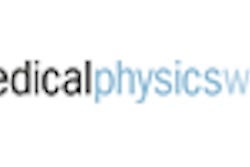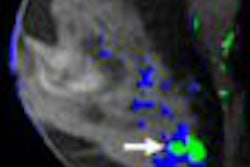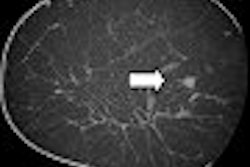VIENNA - Breast MRI should be an integral part of annual breast cancer surveillance for high-risk women age 35 and older, according to researchers from Vienna. Young women with a high genetic risk of breast cancer should begin screening with breast MRI as young as age 25, or as early as age 20 if a family member had breast cancer before the age of 30.
Dr. Christopher Riedl of the department of diagnostic radiology at the Medical University of Vienna made these recommendations Tuesday at the European Congress of Radiology (ECR). He presented the findings of a study that compared the accuracy of mammography, ultrasound, and breast MRI in detecting cancer in a cohort of 327 women who underwent 672 complete surveillance rounds at a single imaging center.
Between 1999 and 2007, 28 cancer lesions were detected. Of these, breast MRI alone detected 12. Mammography detected 14 for a sensitivity of 50%, ultrasound detected 12 for 42.9% sensitivity, and breast MRI detected 24 for a sensitivity of 85.7%.
In the 672 screening rounds, 136 suspicious findings (BI-RADS 4 or 5) were detected, and all the lesions underwent needle-localized, open breast biopsy. "We prefer to be aggressive with very high-risk patients," Riedl said. Approximately 80% of the lesions were benign.
Of the women recruited between January 1999 to January 2001, 46 tested positive for BRCA1 or BRCA2. Starting January 2002, eligibility for the study was expanded to include women age 25 or older who had three or more first-degree relatives with breast cancer diagnosed before the age of 61, two relatives diagnosed before the age of 51, one relative diagnosed with breast cancer before the age of 36, or a relative diagnosed at any age with ovarian cancer. Women younger than 25 with a relative who had cancer before the age of 25 were also eligible.
Women who had received treatment for breast or ovarian cancer were eligible to enroll after 12 months of treatment, unless they had metastatic disease. This expanded eligibility to a broader and more representative population of very high-risk women, according to Riedl.
The total population ranged in age from 22 to 80 years, with a median age of 41 years.
The women had annual mammograms, ultrasound, and breast MRI. Efforts were made to schedule all three procedures on the same day. Young women were scheduled only during the second week of their menstrual cycle to minimize nonspecific, hormone-related enhancement of benign breast tissue. Women who failed to have the three procedures completed within 30 days were excluded from that particular screening round, but their prior and future completed screening rounds were evaluated.
During the course of the study, 27 of the 327 women were excluded during the course of the study due to bilateral mastectomy; 10 participants died, with five due to breast cancer and five to ovarian cancer.
Mammograms were reviewed by a radiologist with 10 years of experience who was aware of the women's risk factors. Breast MRIs were read by a different radiologist with 10 years of reading experience, and high-frequency ultrasound was done by one of two experienced radiologists. All radiologists were blinded to the results of the modalities they were not interpreting.
In addition to detecting 42.9% of the cancers not seen in mammograms and ultrasound, breast MRI detected significantly more invasive and preinvasive cancers, Riedl said. MRI alone detected five (54%) of the 11 cases of ductal carcinoma in situ. MRI was also superior in diagnosing atypical ductal hyperplasia (ADH) lesions. Of a total of 35 of these premalignant lesions, 32 were detected by breast MRI alone; mammography detected nine and ultrasound detected two.
The number of false-positive results was high, especially for breast MRI. Mammography had 25 false positives, ultrasound had 26, and MRI had 101. Riedl attributed the high false-positive rate to the unusually high number of detected lesions classified as ADH. With this population, ADH detection is extremely important because it aids in further individual risk assessment, according to Riedl.
"For the population we studied, the question is not if these women will get cancer, but when," he concluded. "It is their personal choice about whether they wish to have prophylactic mastectomy, but we need to provide them with another alternative."
When asked if this population should skip mammography and ultrasound altogether, Riedl answered that this might be a future clinical protocol recommended for younger women at high risk of breast cancer, but at this time he could not definitively recommend it.
By Cynthia Keen
AuntMinnie.com contributing writer
March 12, 2008
Related Reading
Catching undetected cancer with MR plus mammo in high-risk women outweighs costs, December 17, 2007
Breast MRI comparable to mammography for detecting later cancers, November 25, 2007
MRI beats US for breast screening of at-risk women, but yields more biopsies, August 6, 2007
Mammography still offers advantages over breast MR in DCIS, April 20, 2007
ACS advocates breast MR screening for high-risk women, March 28, 2007
Copyright © 2008 AuntMinnie.com



















